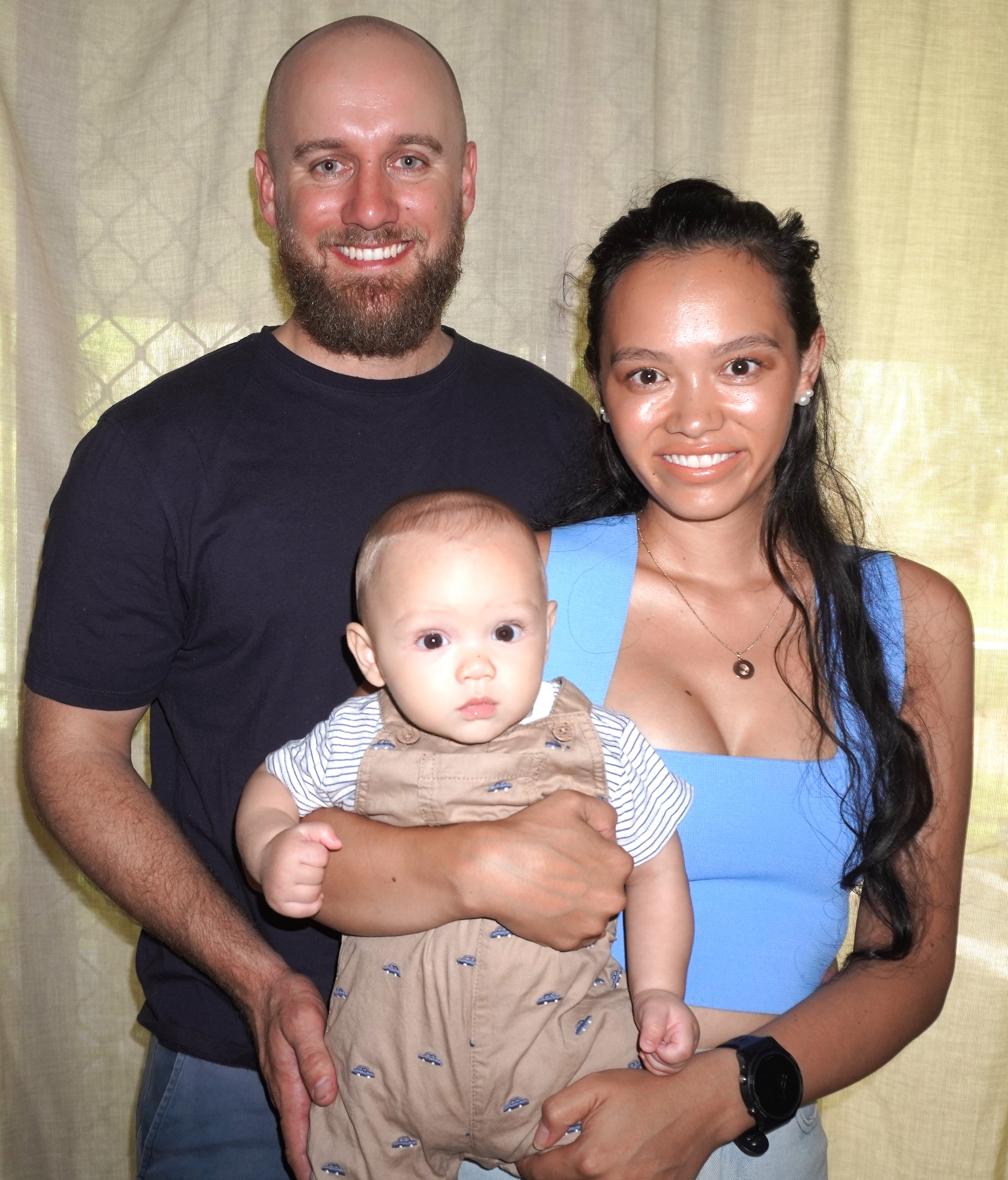


A happy and healthy six-months-old Sarina boy and his mother are survivors of a rare and dangerous nematode disorder causing polymyositis possibly linked to central and North Queensland and Tasmania.
Amy Coyne, husband Kane and six-months-old Vincent are all smiles after their brush with the disorder, which doctors cannot rule out recurring.
Amy was in the 10th week of her pregnancy when she was diagnosed with Haycocknema perplexum, a parasite found in wild meats like possum and kangaroo causing polymyositis in humans.
She was the first pregnant woman ever to be diagnosed with the disorder, and just the 11th person in the world.
‘’Somehow you contract this parasite, and the human body starts attacking itself trying to eradicate the foreign body from the muscles,” Amy said.
“It’s progressive, debilitating and has been known to be fatal in some cases.
“There is a common denominator of all cases recorded; we (those affected) have all spent a chunk of time in far North Queensland and Central Queensland and one in Tasmania I believe.’’
Amy said she downplayed the seriousness of what she’d been diagnosed with to most, apart from husband Kane who could see her deteriorating more each day.
“I’ve always been very in tune with my body and noticed a decline some three years ago,” she said.
“I wasn’t able to do certain things fitness wise, such as get on my toes, lift my head off the ground from a supine position, the way I walked was affected, I couldn’t jump, to name a few.
“This led to lifestyle setbacks such as not being able to open a twist top water bottle, dysphasia (not being able to swallow properly), my speech began to slur and slow; to name a few.
“My muscles atrophied severely and I dropped a good 8-10 kilos, I was so weak I could barely make it up a flight of stairs, let alone carry a load of washing back up with me.”
Amy said she saw many health specialists over the years trying to figure out what was wrong with her body such as chiropractors, massage therapists, acupuncturists, GPs and sports doctors.
“In the end I was eventually referred to a neurologist, who, by my luck, had seen someone years before with similar symptoms. I went through a series of tests and ultimately a biopsy to confirm I had contracted the muscle disorder. I was diagnosed at 10 weeks gestation with my little man.
“I held off taking the treatment as the microbiologist specialist I was seeing wouldn’t guarantee me that the drug treatment wouldn’t affect my baby, as they obviously don’t test drugs on pregnant women. But the obstetric specialist could guarantee that my disorder wouldn’t affect him at all in the womb.”
Amy added that she got to a stage where if she went to the grocery shop, she would feel fatigued to the point she would sleep for hours to recover.
“My body wasn’t functioning the further into my pregnancy I got. If I don’t function, how can I give my son any chance at life?
“The team of doctors behind me, and Kane and I decided, in the second trimester I’d start my treatment.
“I was monitored by blood tests monthly by the disease team for me and fortnightly appointments with the obstetric team for my baby, and by my own observations physically.
“The treatment is simple. Basically it’s a deworming drug but the diagnosis is the hard part. I’m told it is often misdiagnosed as an autoimmune disease or not diagnosed at all.
Now off treatment, Amy gave birth to a healthy little boy and is still being monitored by blood tests.
“There is no guarantee the treatment eradicates the disorder,” she said.
“Being so rare there is no “rehab” plan so I decided to see a very knowledgeable local sports therapist and physiotherapist and am organising to see a speech therapist.
“At the age of 30 I have begun learning how to walk again and am finding strength and balance back in the little things most take for granted.”
By Charlie Payne
Image: Kane and Amy Coyle and six-months-old Vincent are all smiles after Amy overcame a rare parasite disorder which is possibly linked to North Queensland. Photo: Charlie Payne